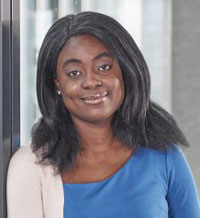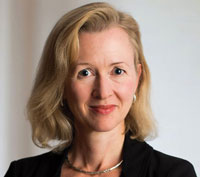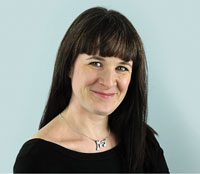
With the pandemic’s grip tightening once again, it has been a daunting start to the new year.
While judges, court staff and litigators adapted swiftly to remote working, the clear message from both senior and junior practitioners is that, ‘for their sanity’, they need to combine home working with the buzz of office life.
Many have also missed being physically in court. But the Lord Chief Justice’s New Year message is clear—footfall in court buildings must be kept to a minimum. The default position will be remote hearings, with judicial discretion to hear witnesses in person, potentially for months, depending on the vaccine programme.
‘It’s certainly not the start to 2021 we all hoped for,’ says LSLA President Chris Bushell, dispute resolution partner with Herbert Smiths Freehills. ‘But, for me, it’s not back to square one. We’re all better equipped for lockdown now than we were last March, and it continues to be very busy in the disputes world. I’m cautiously optimistic for normality returning in 2021, at least the second half of it.’
There is certainly no shortage of existing work, with the potential for significant increases in litigation arising out of the pandemic and Brexit. Seven out of ten of those responding to the survey said the litigation market was growing, compared with 44% in last year’s survey. 89% expect a spike post-pandemic.
The survey was conducted before the Brexit deal was signed but 82% predicted a spike in work once the transition period ended. While 30% thought there could be a flight of work from London, 70% were confident that wouldn’t happen.
So, what lessons will the litigation world take forward?
The pandemic sent a shockwave through the justice system, at a time when it was beset by budget cuts, court closures and a modernisation programme lagging behind schedule. Already under immense pressure, the criminal and family divisions, in particular, saw backlogs build up.
But the Commercial Court in London was fast out of the blocks. Mr Justice Teare determined that the Kazakhstan National Bank case should go ahead as planned in the first week of lockdown, becoming the court’s first fully virtual trial. Judgment was handed down remotely a month later.
For Cockerill J, it was a very visible demonstration that the court was open for business. Overnight, she and her barrister husband had found themselves trying to do hearings from their flat, one in the study and one at the kitchen table. ‘It seemed absurd,’ she recalls. ‘But we live close to the Rolls Building, so I was able to go in to conduct hearings.’
From March to September, the court held 498 hearings, 12 more than the previous year, with 493 held remotely, four in person and one hybrid.
Apart from some glitches with technology and the occasional faux pas by parties and lawyers, the court successfully navigated the new way of working.
Cases included the headline grabbing PCP Capital v Barclays trial and the Financial Conduct Authority’s (FCA’s) COVID business interruption insurance test case. The Supreme Court judgment last week on the FCA test case will result in thousands of cases settling. But Roger Franklin, head of insurance litigation at Edwin Coe, says: ‘Insurers will still be able to challenge claims over issues which didn’t require clarification, such as non-disclosure, and the usual evidential requirements to prove a loss.’
Ed Crosse, LSLA committee member and litigation partner at Simmons & Simmons, describes contacting the court about an urgent matter. The next day, a judge sat from 2pm to 9.30pm when he delivered his judgment. ‘At 6.30am the following morning, we were in front of a Court of Appeal judge,’ Crosse says. ‘It was all done remotely. Would this have happened before? It is extraordinary to have that level of access to the judiciary.’
But the pressure on court time is only going to build as the ‘Covid bulge’ starts to grow, which will filter down to the circuit commercial courts. The first flurry of Brexit-related applications are also starting to arrive.
LSLA committee member Mary Young, dispute resolution partner at Kingsley Napley, is concerned about the pressure on resources. ‘I was told before Christmas that I would need to wait more than two months to get a 30-minute urgent hearing listed in one of the London Courts, which rather undermines the idea of urgency,’ she says.
‘I have also seen some applications dealt with on paper by the courts when a hearing really should have been listed. I think the court staff and judiciary are doing a fantastic job, but I am concerned cracks are starting to show.’
The experience outside London and in some of the lower courts has also been very different, according to feedback via the Law Society’s Civil Justice Committee.
‘Local courts may not have the infrastructure to support a remote hearing,’ says Crosse. ‘It has also been a challenge for LiPs and smaller firms to conduct hearings remotely with electronic bundles.’
Richard Langley is a partner with BDB Pitmans’ 35-strong London litigation team, which is ‘as busy as ever’.
Court listing in the High Court has been fine, he says. ‘But we have some county court work and a particular line of work in the City of London Magistrates Court, and the listing situation there is absolutely dire.’
Cockerill J, speaking to NLJ before Christmas, says the Commercial Court’s lead times were ‘pretty much as they always are for 30-minute to half-day hearings. Once above that it does move out a bit and we would like to see that improve’.
She is hoping there will be some good applications for new judges in the next High Court competition as the Commercial Court is short of its normal quota of 14 judges. But any new appointments won’t start until October.
‘It’s a constant battle,’ she says, ‘as our judges keep being poached by the Court of Appeal. But we are not as badly placed as we were when I first started sitting as a deputy in 2016.’
Trade & Co-operation Agreement
Legal services were included in the Trade and Co-operation Agreement reached between the UK and EU but key details remain unresolved.
Elizabeth Williams, Simmons & Simmons’ London litigation partner, is a member of the Law Society’s Private International Law Committee. ‘As perhaps expected, the EU-UK trade agreement is silent on the issue of civil justice,’ she says.
The EU has yet to agree to the UK’s accession to the Lugano Convention to allow reciprocal recognition of judgments and jurisdiction clauses cross border between the EU and UK.
However, Williams says: ‘We understand from those closer to the negotiations that the EU has not objected in principle to the UK’s accession, which is positive and, if approved, would provide a similar framework of reciprocity to that provided under the previous EU regime.
But, it is likely that there will be at least a three-month gap, during which a patchwork quilt of enforceability of judgments and jurisdiction clauses may exist between the EU and the UK which would inevitably lead to uncertainty and confusion.’
Cockerill J says they are preparing for an uptick in jurisdiction and service applications, as well as urgent applications if there are supply chain difficulties and an increase in anti-suit injunction applications.
‘We are putting in place deputies and former judges to give us extra depth,’ she explains. ‘We are looking at the potential, depending on how things develop, of having one judge dealing with paper applications. But that is a change we can make nimbly as it becomes necessary.’
Accession to Lugano would improve the situation to an extent, she says.
‘But any change in a market peopled by incredibly intelligent and inventive lawyers means there will be things to argue about and bring to court to fight over with great verve and ingenuity.’
Going (& staying) virtual
The LSLA/NLJ survey found some clear positives for the future, with 89% responders wanting courts to continue making greater use of virtual hearings.
Responders said virtual hearings were more efficient; e-bundles worked well when hyperlinked; and the hearings reduced costs, time and resources. The main downsides were that hearings were more tiring than being in court so more flexibility was needed over breaks and that cross examination was ‘hampered’.
One commented: ‘They can be effective and should be used thoughtfully but can add cost—so there should not be a presumption for or against. Why not include the question for CMC planning?’
Cockerill J says the majority of CMC hearings will probably stay remote for quite a while. ‘There is a big debate what the default should be but we have time to work that out,’ she says.
So how did the Commercial Court react so effectively? By coincidence, the software was already preloaded on the judges’ computers. ‘None of us knew it was there but it was very easy to get instructions to use it,’ she explains.
The basic legislative structure was very quickly supplemented to give full flexibility. ‘Judges in other jurisdictions,’ she says, ‘were hamstrung by their legislative backdrop which mandated physical presence in court and others didn’t have the software already installed.’
The Commercial Court’s judges, clerks and listing staff have all been ‘amazing’, she says, while the court is also ‘enormously blessed’ in its users. ‘We have a very sophisticated user base who use video platforms for meetings with international clients. So when we said we want to do this remotely everyone said “yes, can do”.’
Mark Humphries, senior partner of London litigation boutique Humphries Kerstetter, sees no reason to return to physical hearings. ‘We think decisions could be even more streamlined,’ he says. ‘How about exchanges of email by 4pm—day 1 application, day 2 response, day 3 reply and judgment on day 4? Witness evidence is no more persuasive in a physical courtroom than it is online, certainly in the commercial cases we handle.’
For shorter hearings, Langley says the convenience and cost savings outweigh the disadvantages but, for longer hearings, the balance tips the other way.
‘One aspect of virtual hearings that the courts haven’t got right is the issue of access to hearings. I have had a hearing in which everyone present online had to declare to the judge’s clerk, in the hearing of everyone else, who they were and why they were logged in. I found it quite sinister. Any member of the public should be able to anonymously access any open court hearing. The court lists should publish the link for each hearing.’
Colin Passmore, Simmons & Simmons’ senior partner, was involved in the hybrid PCP Capital v Barclays trial. There were five lawyers from each side in court because of the ‘heavy cross examination’. But, he says, as a counterfoil, witnesses from the Middle East and US were cross examined remotely very effectively.
One legacy of the pandemic will be a much greater acceptance that litigators can work effectively from home, though Young, without a lot of space, describes it as ‘living at work rather than working from home’.
The survey found 89% wanted firms to facilitate more agile working, although one warned that WFH is ‘not a healthy or sustainable model long term’ and there will need to be a balance between office and home.
Langley admits he was surprised how well and how quickly everyone adapted.
‘I worry for the trainees and NQs and how to make sure they are not missing out,’ he says ‘and I cannot quite work out how we are going to settle when London opens up again, since clearly people will continue with a significant amount of home working.
‘However, one of the great benefits has been that people who were already on a flexible working pattern and may have felt “out of the picture” are now just as visible as everyone else.’
Charlotte Hill, president of the Junior LSLA (JLSLA), misses both the office and being in court. ‘You can’t beat real life human interaction,’ she says. ‘While virtual hearings are working very well, they just aren’t the same—particularly from a junior perspective.’
Hill, senior associate with Penningtons Manches Cooper’s commercial disputes team, says: ‘There isn’t the same satisfaction compared with being in the court room itself with the full legal team present, journalists behind you and eyeballing the judge.’
For Crosse, there are pros and cons to WFH. ‘I have seen far more of my family and have been doing the school run, which is brilliant,’ he says.
‘But generally most people are really hoping we will get back to the office. It is essential for firms’ culture and the sanity of their lawyers—if they can’t interact that culture will be lost over time.’
It is also harder to develop new pipelines of work, he says. ‘Many cases have come to me while socialising at firm or chambers’ events or at conferences. How do you create a profile for yourself if you are stuck at home?
‘But the world has changed fundamentally. The pandemic has been a catalyst in changing attitudes and the question is no longer may I work from home but how many days do I need to be in the office.’
For Avneet Baryan, an associate in Rosling King’s Dispute Resolution Group and a member of the JLSLA, WFH has its challenges. ‘When you are incredibly busy, it is great not to have the commute,’ she says. ‘But it is also very easy not to take breaks, so, for me, the biggest challenge has been to take time out for a walk or run. Some of my colleagues and I have “coffee chats” where the rule is “no talking about work”.’
Cost matters
One constant theme of English litigation is cost. Humphries says: ‘English dispute resolution is becoming a luxury reserved for the rich. Very few can litigate in England these days without buying very expensive ATE insurance.’
The survey asked if cost was the most significant factor over the last two years in clients deciding whether or not to litigate in London. A fifth said yes but nearly 80% said no. The key factors were the quality of judges and perception of judicial independence; and procedural reasons.
When it came to procedural reforms around disclosure and witness statements, only a third said clients had commented on the cost impact of the reforms. But, of those who did, few said they had seen a positive cost saving benefit.
Reforming disclosure
On the disclosure reforms, the survey found a quarter supported the pilot becoming permanent when it ends in 2021, while 37% wanted a return to CPR 31. But, add in those supporting the pilot with amendments and those wanting CPR 31 with the rules tweaked, and it was a closer result 48% to 52%.
Suggestions from responders included: a process that has less cumbersome and costly administrative steps and court forms; a more targeted approach to proportionate disclosure searches directly linked to key issues in the case; short hearings on which judicial guidance can be sought on contested disclosure issues.
The UK’s disclosure regime is often cited as a key reason for litigating here. But only 5% of survey respondents said it was a significant factor in clients choosing UK courts.
‘It would be hard to challenge the view that we have given more thought to disclosure than anyone else,’ says Cockerill J. ‘But the idea that disclosure is our selling point can be overstated. When people are asked why they litigate here, they cite high quality judiciary; high quality legal structures; predictable outcomes because of common law precedents; very good flexible remedies.’
Langley says he has seen no discernible savings from the pilot. ‘The case management tools were already there in CPR Part 31 but judges simply would not use them,’ he says. ‘However, too much has been invested in the pilot by the powers that be to realistically expect it to be reversed. But I would certainly advocate scrapping the list of issues, thereby ending the use of different disclosure models for different issues.’
For Baryan, the front-loading of costs needs to be addressed. ‘A significant amount of work needs to be undertaken prior to the CMC which takes parties’ eyes off of any settlement discussions,’ she says.
Despite some stinging feedback last year, the disclosure working group (DWG) decided against implementing any wholesale changes midway through the pilot. Instead, it modified the proposals around document preservation notices, adverse documents, simplified the DRD and model C requests.
The amendments were approved by the CPR committee in October and are now awaiting ministerial consent, when they will then form part of the revised practice direction and guidance notes.
But Crosse, part of the DWG’s small drafting committee, stresses it is a ‘living’ pilot. Natalie Osafo, senior associate at Stewarts, was brought onto the drafting committee to bring a fresh perspective. ‘She advises on disclosure challenges as part of her practice,’ Crosse explains, ‘without having any of the baggage of having been one of the authors of the pilot.’
Osafo, former president of the JLSLA and now on the LSLA Committee, says it is exciting to be part of an evolving process which is seeking to preserve key features of the disclosure regime while driving a more focused and proportionate approach.
Crosse says the next step is to invite the views of professional associations and the judiciary on additional changes based on ongoing feedback—around multi party cases, low to middle value claims and simplifying the DRD for some types of cases.
‘In the second half of the year,’ he says, ‘the DWG will take stock whether to recommend extending the pilot or whether the changes are ready to be embodied into a permanent rule change.’
Longer term, he believes technology will be the solution when review tools will be able to interrogate big data so effectively there will be less emphasis on rules to reduce costs.
Witness statements: a new regime
When it comes to the proposed new witness statement regime, survey responders were split 49% to 51% in favour of the changes.
Langley says the tools to manage the perceived problems already exist, but are not being used. ‘A few swingeing costs orders against parties who produce overly long witness statements full of inadmissible argument would start to change behaviour, especially if they were wasted costs orders against the lawyers,’ he argues.
‘I think the idea of listing the documents shown to a witness is hare-brained. It will achieve nothing of any use but will certainly add to costs.’
‘Pointless nonsense,’ agrees Humphries. ‘A more interesting proposal is a return to evidence in chief. The next logical step would be the abandonment of witness statements and then we would have come full circle in around 30 years.’
However, Bushell, who is on the witness statement working group, takes a pragmatic stance: ‘The CPRC has approved the draft Practice Direction and Appendix so it is likely to come into force for witness statements signed on or after 6 April. So people need to get familiar with it now!’
The Commercial Court ends its 125th anniversary year next month after a transformative year when it went digital overnight while other jurisdictions struggled to cope. But, with the country back in lockdown as the race between the vaccine and the virus plays out, how will the court and litigators deal with the challenges that year 126 brings?
Lockdown lessons: Diversity

“[It is important for firms to] sponsor BAME talent at junior and mid-levels for senior positions”
Natalie Osafo, LSLA committee member

The legal community needs to do more to promote diversity and inclusion, according to 93% of those responding to the LSLA/NLJ annual litigation survey. It is an issue that was brought sharply into focus last year with the tragic death of George Floyd in the US and the Black Lives Matter protests.
While 86% of those responding to the survey said their firm’s attitude towards diversity and inclusion had improved over the last year, 14% said their firm’s approach hadn’t changed.
Top of the list for improvement included: promoting and supporting social mobility; eliminating bias in recruitment, evaluation process and promotion; tackling racial discrimination; encouraging flexible working and job sharing; and ensuring senior management is diverse.
One respondent stressed the need to ‘demystify’ the profession so it is seen as accessible to anyone with ability, regardless of background, race, sex; while another said recruiting and promotion systems should be colour-blind, sex-free, meritocratic and as transparent as possible.
- Simmons & Simmons is setting targets that 15% of UK partners—20 out of a London cohort of 150—and 30% of UK trainees—15 out of 50—will be from ethnic minority backgrounds by 2025. It is important to set targets, stresses Colin Passmore, the firm’s senior partner. ‘If you just say you are going to do something, there will be drift. But if we say it publically, it means people like you will come back and ask us in 2025 how we have done.’
- The City of London Law Society is to work with the Social Mobility Pledge to build relationships with law schools outside the usual milk round to encourage their students to consider careers in City firms.
- As part of a 2018 firm-wide diversity initiative, Freshfield Bruckhaus Deringer’s London dispute resolution team committed to building equality of opportunity between male and female associates into its work allocation processes. Partner Sarah Parkes says a key aim is for female senior associates to manage significant, high profile cases. ‘The work allocation process is now being rolled out globally,’ she says. ‘We have also introduced a commitment to ensure that allocation decisions are taken with affirmative consideration of black and ethnic minority associates and of their career progression.’
LSLA committee member Natalie Osafo says firms can take two important steps: First, sponsor BAME talent at junior and mid-levels for senior positions. Second, all members of the legal community should be assessed and held accountable for this sponsorship in the same way as any other competency or performance requirement.
Life on the bench: Opportunities & challenges

“Never feel shy to talk to people in the job. Everyone is really keen to encourage good candidates from as broad a range of backgrounds as possible”

But she did apply for the first Deputy High Court judge competition when it was launched in 2016 and, ‘wholly to my surprise, I got it’, becoming a High Court judge the following year.
Last August, she took over as the head of the Commercial Court, becoming the second woman to lead the court in its 125-year history. But she is currently one of only two female judges out of 13, none of whom is from an ethnic minority background. There is a similar situation in the Chancery Division, with two female judges out of 17, with none from an ethnically diverse background.
‘We need to attract the best bright young minds from a range of backgrounds and experiences,’ she says. But she is concerned that, if the judiciary is not visibly diverse, women and BAME lawyers may be put off applying because they feel they would have to be ‘practically a unicorn’ to become a judge.
Issues around judicial diversity are high on the agenda. The Lord Chief Justice, Lord Burnett of Maldon, recently published a ‘Judicial diversity and inclusion strategy’—a five-year plan to bring about a ‘meaningful positive change to the representation of under-represented groups’ within the wider judiciary.
She says the immediate problem is judges at the High Court level. ‘It is a conversation I have been having ever since I took over the job last August and I can’t pretend I have an answer that is satisfactory to me yet.’
But there is also a ‘long game to be played’, she continues, pointing to the Rolls Building Art and Education Trust’s educational programme. ‘The trust is trying to reach out to communities where children wouldn’t think of becoming commercial lawyers. We bring them into court to meet judges, take part in mock trials, introduce them to areas of law they don’t see on television but which offer really interesting and—let’s face it—well-remunerated careers. But none are going to be judges in the next five, ten or 15 years.’
So what prompted her to go into commercial law and then the judiciary?
She was encouraged to choose commercial law while at university. ‘This is one reason why explaining what the role entails is so important,’ she explains. ‘If I hadn’t bumped into those two people, I wouldn’t be here.
‘They explained it was a great job to do if you liked the law; liked really tough problems; and wanted a job that would keep the wolf from the door. So I picked their brains about the commercial sets, applied and never regretted it.’
From 1991 to 2017, she was a member of Essex Court Chambers. She was appointed a QC in 2011 and, for many years, had no judicial ambitions.
But, sitting regularly in the Commercial Court and in the Administrative Court she realised this was her future. ‘Every time a case settled, I got on the phone to listings saying ‘do you need any help?’
So why the initial hesitancy? ‘I am afraid I have no very good excuse for the impostor syndrome!,’ she admits. ‘Heaven knows enough people reached out a hand to encourage me to think of a judicial career, including Gloster J, the first female Commercial Court judge.
What advice would she give women and BAME lawyers who may feel the same? ‘Never feel shy to talk to people in the job,’ she says. ‘Everyone is really keen to encourage good candidates from as broad a range of backgrounds as possible.’
Recent firsts
There have been some recent ‘first’ appointments to key roles. Claudia Salomon, arbitration partner at Latham & Watkins in New York, has been selected to take over in July as the next president of the ICC International Court of Arbitration in Paris, paving the way for her to become the first woman to hold the role in its 97-year history. This month, Shauna Clark has taken over as Norton Rose Fulbright’s US and global chair, the first woman of colour to do that at the firm and the only one to chair one of the US’s highest grossing law firms.
‘These “firsts” are hugely important,’ says Cockerill J, ‘though I did think that, by the time I reached this age, there would be no firsts of this sort left. But it is very important that we keep on making progress. A quarter of the judges in the Court of Appeal today are women when there were none as recently as 1988.
Lockdown lessons: Wellbeing & mental health

“I’ve realised that a large part of what I love about what I do is based on the people I work with. It’s just not as much fun when I don’t see them”
Mary Young, LSLA committee member
Key suggestions from those responding included—reducing billable hours’ targets; promoting exercise and wellbeing initiatives; and focusing on lawyers as ‘people not as units of time’. Training and education is absolutely essential; remove stigma when someone is struggling; and share experiences/coping mechanisms.
Others commented: Stop promoting overworking as a marker of achievement; be more accepting of people with mental health issues and understand that they can be great solicitors; we need to follow France’s lead of no emails past a certain time—most things can wait; always being on call at nights and weekends is unsustainable; take practical steps around hours/lifestyle not just lip service.
But, while it is important to minimise avoidable stress, another said ‘we will never make the job stress-free’ so resilience is important alongside academic performance.
The pandemic has accelerated the profession’s focus on wellbeing and mental health.
LSLA president Chris Bushell says the association is putting in place a mentoring/well-being programme for members. This will be open to all levels of seniority and mentors and mentees can meet as regularly as they like.
The association’s junior section is planning to run a webinar on the issues in February. Charlotte Hill, JLSLA president, says: ‘It is vitally important that we remember to look after ourselves and our colleagues, contacts and clients while we all continue to WFH—people can so easily hide how they are feeling.’
Freshfields’ Sarah Parkes says her firm has trained more than 260 employees globally in mental health first aid and has a ‘wellbeing hub’ providing employees with tailored support.
LSLA committee member Mary Young says her firm has run ‘brilliant events’ to keep people in touch.

Grania Langdon-Down is a freelance legal journalist.












